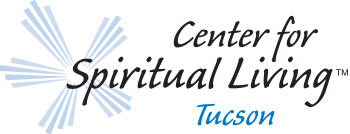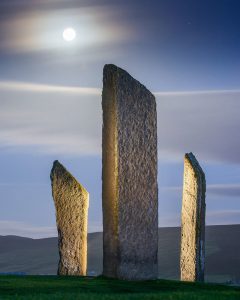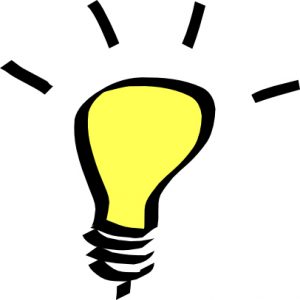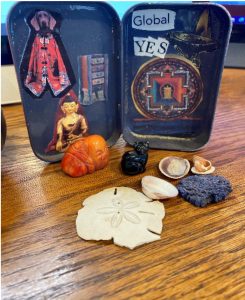There’s so much I want to say, so I’ll see if I can get the words to come out in any sensible order. Perhaps I should have entitled this post, The Heavy Lift. Both titles would apply equally. I’ll start with Dr Ernest Holmes, from The Science of Mind 51.1. “One of the great difficulties in this new order of thought is that we are likely to indulge in too much theory and too little practice. As a matter of fact, we only know as much as we can prove by actual demonstration.”
It is too easy to look at the abundance of upset and disarray that surround us in the world of form right now and look for someone to be at fault, or at least someone we can blame, or for us to feel guilty, ashamed or embarrassed by something we, or people like us, have done in the past. Pointing fingers, damning, discrediting or demeaning someone, and looking for some statue to tear down, or somebody to fire or send to jail, doesn’t get to the root of the apparent issue, or lead to any sort of solution with lasting effect. Those actions do create a brief feeling of satisfaction; we did something and made some noise. Yay, us. These are not short-term blips that we can put a splint on (like a broken finger) so they can heal ‘enough’ and we can get back to business as usual. At least I hope they’re not.
The Stage Is Set
The Bighorn Fire (18+ days, started by lightning, 65,500+ acres burned (as of June 23 @ 3:51am), remarkably only 4 minor heat-related injuries). The Incident Management Teams (and the 900+ firefighters that have been involved in the response so far) have masterfully handled the Bighorn fire. The smoke that hangs over much of southeast Arizona like a shroud, and the fires that light up the night (in a bad way), leave us all a little on edge and more than a little uneasy. This just adds to the general malaise and discomfort.
Covid-19. Our experience of the physical world has changed drastically in the last 3 months. Who would have guessed, besides some dystopian science (fiction) writers, that a novel virus would send all of us to our rooms for an indeterminate period of time? And that the very human desire to gather together, for companionship and comfort is the most dangerous thing we can do for the protection of our most vulnerable members of our society. And the feebleness of our food supply, and our health care system. And, and, and (I could go on)…
Political divisiveness, extremism (on all sides) and groundless ‘haterade’. I’m just going to leave this right here.
The Main Event
I’ve been listening to E.O. Wilson’s audiobook, The Meaning of Human Existence. He writes about the strong tribal need for belonging, and the primitive/primal need to have an other, so that we have some made-up reason to band together, separate ourselves and protect our group. He goes on to say that we create enemies to make ourselves feel stronger, and safer, as long as we are in the ‘in crowd’. The idea of us-versus-them is embedded in human consciousness, and of primary importance in default thinking, or the collective unconscious, or race tendency. A bias toward or against any particular ethnicity is not implied by that unfortunate word choice. These phrases represent a way to describe thoughts and beliefs that are commonly held by many/most people. They do not include only ‘bad’ thoughts or beliefs; they include all shared thoughts and beliefs. If we don’t intentionally choose a thought or belief, we choose default thinking, by default.
Remember Jane Elliott’s blue eyes-brown eyes exercise with her third grade class in 1968? (read more @ janeelliott.com) She wanted her students to see the embedded irrationality of people with one eye color being superior to people of another eye color. The kids bought into it hook, line and sinker. When they were the favored ones, they treated the other children badly. When they fell out of favor (for no apparent reason), the felt crushed by what seemed like the entire weight of the world on their backs, and the opposite group repeated the pattern of assumed superiority. There’s something very primitive about being favored and on top. It wasn’t until later, when they were discussing the exercise that they could begin to see that they had done anything irrational. On one level, it seems that tribalism is an innate human condition.
In Cynthia James’ ‘Conversations of the Heart’ call last Friday night that I spoke about last Sunday, one of the participants rather dejectedly asked, “Why would the people in power give up their superior position?” None of us had a good answer to her question. Why would they?
E.O. Wilson also wrote about the differences that had been observed by scientists in studying animal behavior between success of individuals within groups and the success of groups as wholes. Within a group, selfish individuals tend to do better than the remainder of the group, but between groups the groups with more altruistic individuals tend to do better than groups with lots of selfish individuals. This doesn’t come as a surprise to anyone who thinks about human dynamics either.
In game theory, there is a strategy called tit-for-tat. Essentially, if a player is provoked, they retaliate. If they are not provoked, they cooperate. In long-term games, those who cooperate have greater success. Earlier this month, I read a report (theconversation.com/nondiscrimination-against-lgbt-individuals-isnt-just-the-law-it- helps-organizations-succeed-140810) that gives me hope that altruistic (nondiscriminatory) behaviors can be seen as benefitting individuals as well as the whole.
The Goal, and One Possible Route
Futurist Buckminster Fuller wrote, “You never change things by fighting the existing reality. To change something, build a new model that makes the existing model obsolete.” Some of us are just becoming aware of how biased existing systems have been, and are looking for new models that value everyone’s contribution, while dismantling the old systems one interaction at a time. It’s a slow process, an uncovering of old stories that are so old, and so buried, we don’t even know they are there.
We are starting down a path that could lead to a new world, one that works for everyone. We won’t succeed using the same rules and playing the same game. We won’t get there by discarding what presently exists, and disenfranchising participants in the process. We need a new model that makes the old model obsolete.
In the next three months, CSLT will be exploring this new territory. We start with a guest speaker on Sunday July 5th, Dr Karmen Smith speaking about how “Love Changes America”. I hope you’ll plan to attend our zoom service that Sunday. She is a powerful speaker.
Then we’ll move through a series of three quick book studies in July (David Richo’s Triggers (How We Can Stop Reacting and Start Healing)), August (Rosamund Stone Zander & Benjamin Zander’s The Art of Possibility, which is about the importance of relationship and connection, and how our small separate, calculating, selves inhibit our progress and get in our way) and September (Barbara Marx Hubbard’s Emergence, The Shift from Ego to Essence (10 steps to the Universal Human)). [The book links will lead you to Amazon. However, if you log in to smile.amazon.com and choose “Center for Spiritual Living Location: Tucson, AZ”, our Center will receive donations, which will be greatly appreciated]
The path of the Universal Human may be a new model that moves us in the direction we long for and desire.
Ernest Holmes wrote in 365 Science of Mind 186.1, “We are made perfect when we enter into the communion of love with one another and with the invisible essence of Life. Love is the fulfillment of the Law, that is, we do not make the highest use of the Law unless that use is motivated by Love, by a sincere desire to express unity, harmony, and peace.”
Join me in envisioning and embodying this new world, the world that works for everyone.
–Rev Janis








